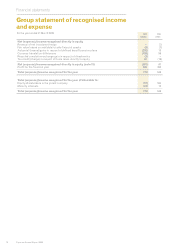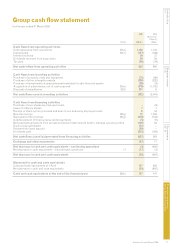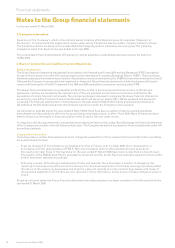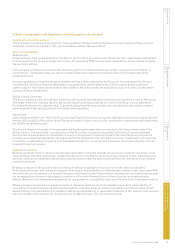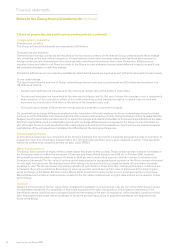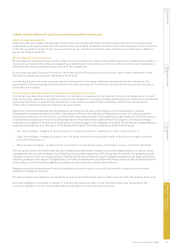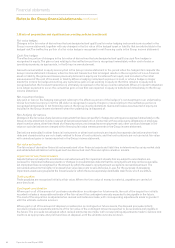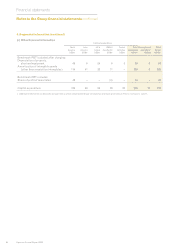Experian 2009 Annual Report Download - page 87
Download and view the complete annual report
Please find page 87 of the 2009 Experian annual report below. You can navigate through the pages in the report by either clicking on the pages listed below, or by using the keyword search tool below to find specific information within the annual report.
85Experian Annual Report 2009
Introduction
2 – 7
Business review
8 – 43
Governance
44 – 72
Financial statements
Group nancial statements
2. Basis of preparation and signicant accounting policies (continued)
Current and deferred tax
The tax expense for the year comprises current and deferred tax. Tax is recognised in the income statement, except to the extent
that it relates to items recognised directly in equity. In this case the tax is also recognised in equity.
The current income tax charge is calculated on the basis of the tax laws enacted or substantively enacted at the balance sheet
date in the countries where the Group operates and generates taxable income.
Deferred tax is provided in full on temporary differences arising between the tax bases of assets and liabilities and their
carrying amounts in the Group nancial statements. However, if the deferred tax arises from initial recognition of an asset or
liability in a transaction other than a business combination that at the time of the transaction affects neither accounting nor
taxable prot or loss, it is not accounted for. Deferred tax assets and liabilities are calculated at the tax rates that are expected
to apply to the period when the asset is realised or the liability is settled, based on the tax rates and laws that have been
enacted or substantively enacted by the balance sheet date.
Deferred tax assets are recognised to the extent that it is probable that future taxable prot will be available against which the
temporary differences can be utilised.
Deferred tax is provided on temporary differences arising on investments in subsidiaries and associates, except where the
timing of the reversal of the temporary difference is controlled by the Group and it is probable that the temporary difference will
not reverse in the foreseeable future.
Provisions
Provisions are recognised when:
The Group has a present legal or constructive obligation as a result of past events; and
-
It is more likely than not that an outow of resources will be required to settle the obligation; and -
The amount has been reliably estimated. -
If the effect of the time value of money is material, provisions are determined by discounting the expected future cash ows at a
pre-tax rate that reects current market assessments of the time value of money and, where appropriate, the risks specic to the
liability. Where discounting is used, the increase in the provision due to the passage of time is recognised as an interest expense.
Where the Group expects a provision to be reimbursed, the reimbursement is recognised as a separate asset when the
reimbursement is virtually certain.
Leases
Finance leases
Leases of property, plant and equipment where the Group has substantially all the risks and rewards of ownership are classied
as nance leases. Such leases are capitalised at the lease’s inception at the lower of the fair value of the leased asset and
the present value of the minimum lease payments. Each lease payment is allocated between the liability and nance charges.
The rental obligations, net of nance charges, are included in other payables. The interest element of the lease payment is
charged in the Group income statement over the lease period so as to produce a constant periodic rate of interest on the
remaining balance of the liability for each year.
Operating leases
Leases in which a signicant portion of the risks and rewards of ownership are retained by the lessor are classied as
operating leases.
Payments made under operating leases are charged in the Group income statement on a straight line basis over the period of
the lease. Incentives from lessors are recognised as a systematic reduction of the charge over the period of the lease.



